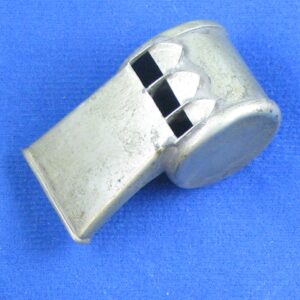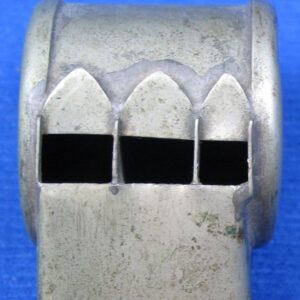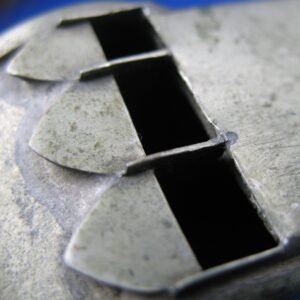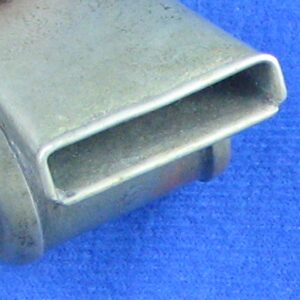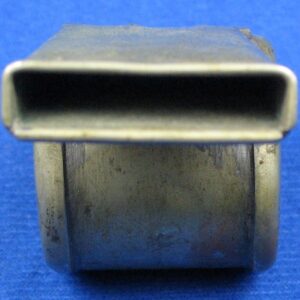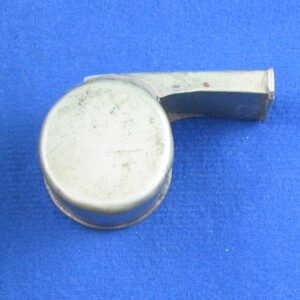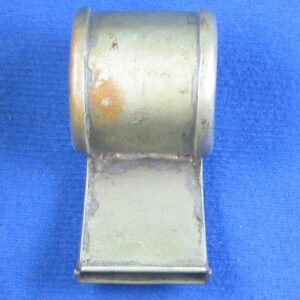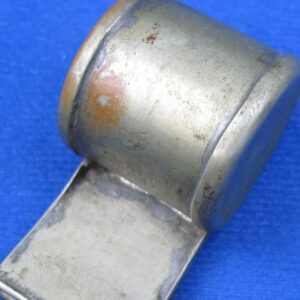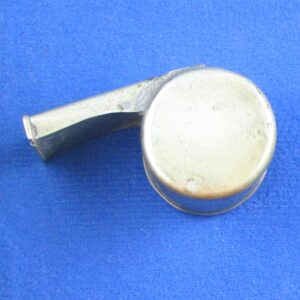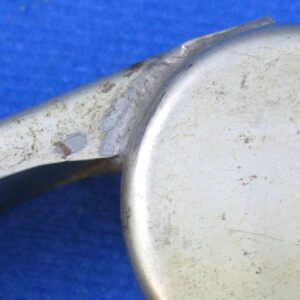Spotlight > Whistle Categories > Escargot > 045
A very unusual escargot is one with two windows and even more unusual is this magnificent THREE window escargot !! It is a thin wall for the most part, but then again it isn’t quite.
Let’s peek at it closer and see what work went into such an unusual model. No other one has been seen to date, so it qualifies for the special edition SPOTLIGHT.
Although very rustic in overall form there was a lot of detail that went into this whistle. We first note that the size is larger than usual ( compared to the average Thunderer ). It comes in at the same length of your standard escargot, but without a knop. The weight is approximately the same too.
However the similarities become less as we move on from there.
Right away the windows jump out at you don’t they ?? So let’s focus in on them first off…
As you can see there are three. What did it take to construct them ?? It would appear that this whistle was made In seven pieces !! First the insides. Two separating walls or partitions were inserted in the barrel. These were notched onto the barrel itself and soldered all the down and around the barrel. Then two ‘outer’ similar edges were soldered just before the end caps. In effect there are now four baffle edges, creating three chambers with three windows.
Then to finish them off there are three protruding pieces soldered onto the barrel itself on the exterior top edge and pointing upward. Not just ornamentation, but each serves as slightly directional of the air — which modifies it and makes it higher pitched than one would have expected.
How would one do the peas if used ( optional of course ) ?? This has three peas and they are each made of wood. Again they are unusual in that each has a hole drilled through it and then perpendicular there is a cross hole drilled, which is very unusual.
Now for the mouthpiece. It is one top piece wrapped down on each side, so in effect a U shape. Then there is a bottom piece soldered up to it. It also tapers out slightly as it approaches the front.
Up front is a tooth grip too, which is curled around from the mouthpiece itself. Here is another angle to appreciate it more.
The side walls of the mouthpiece are also tapered, which gives added strength.
Over and over again in many instances this somewhat easy to overlook jewel reveals rustic, novel, but ingenious whistle design.
As you turn the whistle around and look at each of its features you see that a lot of thought ( or experimentation ) went into its creation. Features are from other whistles and yet some original design and improvements.
No makers marks or identification was found and nothing similar made.
Compare this last picture to the next one and you see that the end caps completely wrap around and they slip over the barrel sides.
This is a very light whistle. It would seem to feel and be a tin whistle. However the construction is so well done and reinforced that it is quite strong and sturdy.
The material appears to be nickel silver and not plated. All in all a very unusual and what may be very rare model. Perhaps an experimental effort ?? Yet it does not seem to be a first effort does it ?? The windows are unevenly spaced and is entirely hand crafted.
Nothing about this whistle would demand a large ticket price would it ?? Yet here is an example of a rare and very collectable whistle. It really shows what there is to learn from the study of whistles in general and one can only wonder what the ‘whistory’ is behind its creator/creation.
– TWG
Posted May 5, 2015
